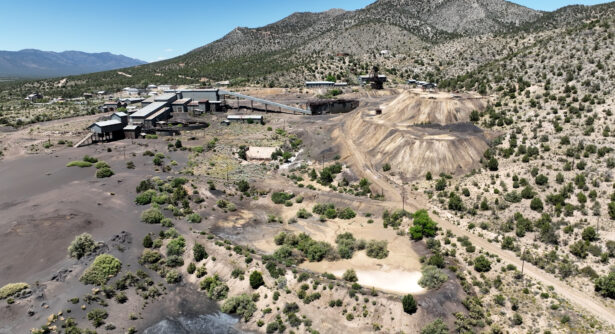
Unlocking the Hidden Potential: Turning Neglected Brownfields into Vibrant Green Spaces
This article appeared in the American Academy for Park and Recreation Administration Newsletter
In an age where urban and suburban land is a coveted commodity, communities should look for solutions to rejuvenate abandoned, vacant, underutilized, often blighted properties to develop the amenities that residents need. These sites are known as brownfields. The U.S. Environmental Protection Agency (EPA) defines a brownfield as “real property, the expansion, redevelopment or reuse of which may be complicated by the presence or potential, perceived presence of a hazardous substance, pollutant, or contaminant.” These properties may have been abandoned or underutilized due to concerns about the environmental risks associated with the contamination. Today, they are emerging as valuable options to create new open and green spaces, promising a breath of fresh air for our neighborhoods. In this article, we share the incredible potential of converting brownfields into green fields: lush parks, dynamic recreational facilities, enchanting trails, and inviting open spaces.
Brownfields have long been a thorn in the side of communities, but with innovation and unwavering dedication, they are shedding their tarnished past and emerging as beacons of hope. The EPA Brownfields Program has been a game-changer, providing grants and support that empower communities across the United States to assess, safely clean up, and sustainably repurpose brownfields, ultimately fostering economic development. However, the true magic of brownfields redevelopment lies beyond economic benefits. These once-neglected areas can be reborn as green oases for our communities, offering parks, playgrounds, recreational facilities, trails, community gardens, natural habitats, and open spaces that beautify our surroundings, enrich our lives and improve community health.
Resources for Your Community’s Vision
The transformation of brownfields into prized green spaces is made possible by a plethora of resources available to park and recreation professionals and their communities. The EPA provides grants through its Brownfields Program, opening the door to financial support. But that’s not all; Technical Brownfields Assistance (TAB) providers, primarily funded by the EPA, offer essential cost-free technical guidance for communities and stakeholders eager to address their brownfield sites. These experts help enhance understanding in a brownfields program, including determining or assessing a property, cleanup, revitalization, and reuse. TABs are instrumental in supporting the development of EPA grant applications and fostering partnerships for site redevelopment.
A Glimpse into Success!
Hare are inspiring projects that exemplify the incredible benefits of reimagining brownfields as
natural open spaces or recreational havens:

Image shows brownfield at Cooley Landing in Palo Alto California before it was transformed into a park
1. Cooley Landing Park and Education Center, East Palo Alto, California: In a disadvantaged community, a 9-acre nature park and education center rose from the ashes of an 80-year-old burn dump. The project, supported by the EPA and various partners, transformed a liability into a much-needed asset, providing open space, restoring habitats, and promoting environmental education.
2. Old Fort Lowell, Tucson, Arizona: An old U.S. Army supply base is being reimagined as a museum, showcasing the history of military life on the Arizona frontier. The project’s success is partly due to partnerships, community engagement, and leveraging resources, including EPA brownfields funding.
3. McGill Ball Park, White Pine County, Nevada: This project addressed environmental safety concerns before renovating the historic ballpark. Partnerships, community engagement, and leveraging resources, including EPA brownfields funding, played crucial roles in revitalizing this recreational resource for the rural community of McGill.

India Basin Shoreline Park looking towards Bayview-Hunters Point neighborhood
4. India Basin Waterfront Parks, San Francisco, California: The India Basin Waterfront Parks project is a prime example of how brownfields can be reborn. Overseen by the City of San Francisco Parks and Recreation Department, this ambitious initiative has turned a former industrial site into a flourishing waterfront park. The project design focuses on addressing equity and inclusion, ensuring all have access to the beauty of the waterfront, bringing and celebrating diverse communities together. The park also increases the neighborhood’s climate resilience by buffering storm surges and rising seas.
5. Origin Park, Clarksville, Indiana: The River Heritage Conservancy recently received an $800,000 EPA grant for this new urban riverfront 430 acre park, located on the north shore of the Ohio River. Origin Park is already open in limited designated areas to the public. Over the coming years, the park will undergo brownfield remediations that will replace degraded industrial landscapes with healthy and biodiverse forests, meadows, and wetlands that can be enjoyed via trails, boardwalks, and bridges.
Partnerships, Community Engagement, and Resource Leveraging
These success stories underscore the importance of partnerships, community engagement, and leveraging resources in driving brownfields redevelopment projects forward. Collaborative efforts that unite government agencies, property owners, developers, and the community are instrumental in achieving shared goals. Engaging the community ensures that redeveloped properties meet local needs and expectations while leveraging resources from the public and private sectors, including grants, subsidies, and bonds, make these projects financially viable. Parks, recreation, and community services professionals are uniquely positioned to ensure these keys to success in reimaging and redeveloping a brownfield into a greenfield! In pursuing sustainable development and inclusive spaces, these brownfield-to-park transformations stand as inspiring models. They highlight the potential for revitalizing communities while keeping environmental, social, and economic sustainability at the forefront of the agenda. With creativity, dedication, and a commitment to justice, equity, diversity, and inclusion (JEDI) principles, we can turn what was once a liability into a cherished community asset. It’s time to unlock the hidden potential and breathe new life into our neighborhoods, one brownfield at a time.
Learn more:
EPA Brownfields Programs & Grants





